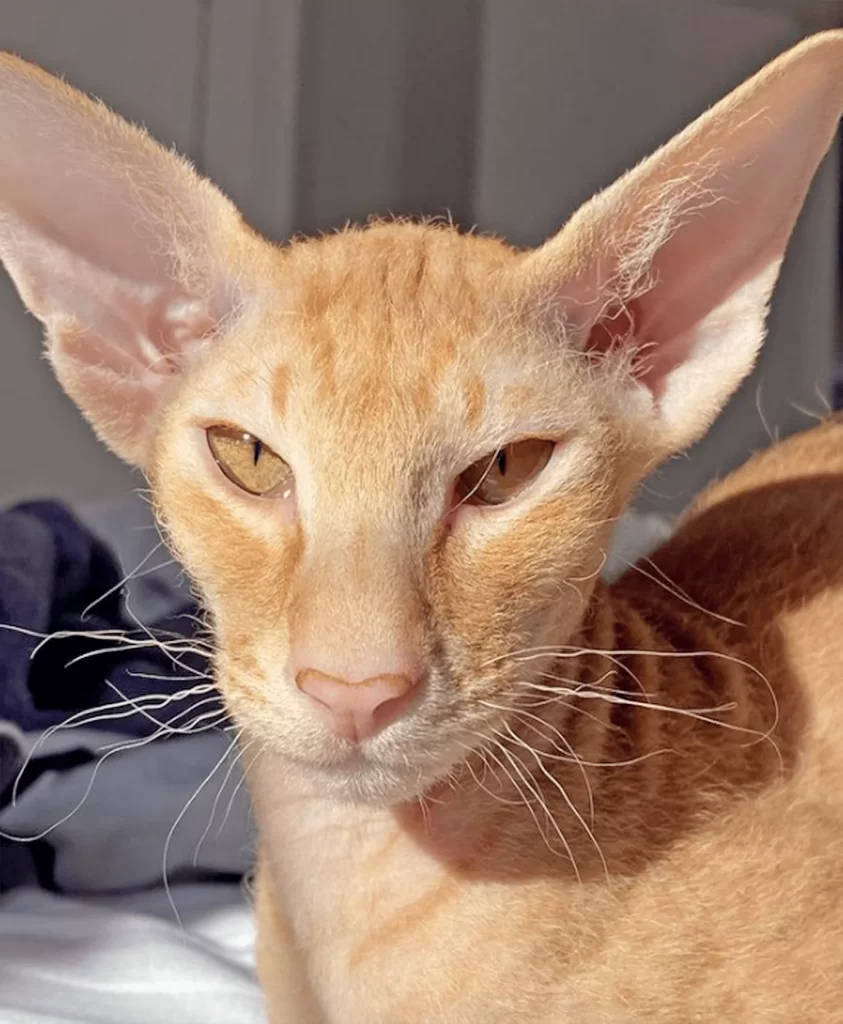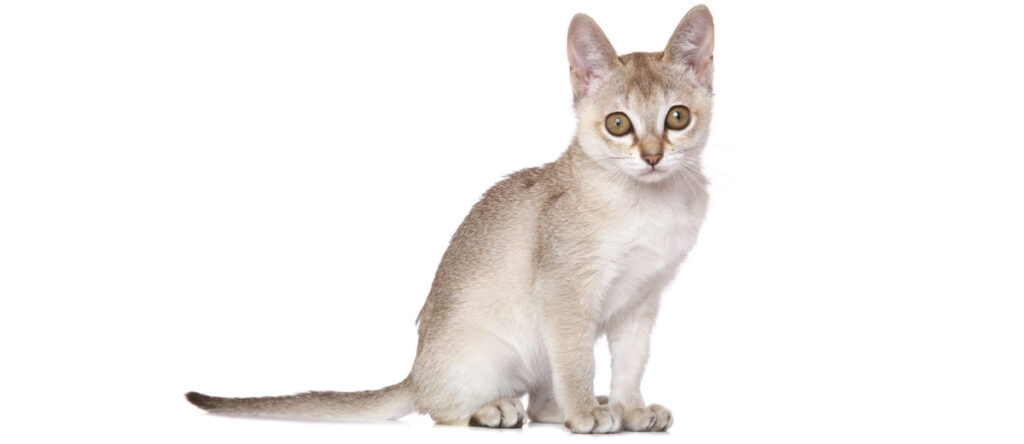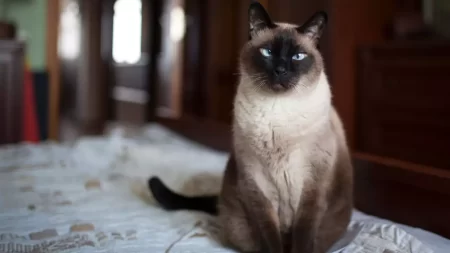If you love cats but hate the hassle of cleaning up their fur, you might be wondering if there are any cat breeds that don’t shed. The answer is yes, there are some cats that shed very little or not at all, thanks to their unique coat types and genetics. These cats are also ideal for people with allergies, as they produce less dander and saliva, which are the main sources of cat allergens.
In this article, we will introduce you to 15 cat breeds that don’t shed, and give you some tips on how to manage cat allergies.
What Makes a Cat Breed Non-Shedding?
All cats have hair but shed differently. New hair grows in place of old or damaged hair during shedding. Cats shed due to seasonal changes, hormonal changes, stress, health difficulties, and grooming. Different cats shed more based on their coat length, density, texture, and color.
Cats with non-shedding coats shed less hair throughout their lifetimes. These cats normally have one coat and no undercoat for insulation and protection. They have fine, short hair that is less conspicuous and easy to manage. Sphynx, Cornish Rex, and Devon Rex are non-shedding cats.
Although low-shedding, some cat breeds do shed fur periodically. Although they have a double coat, these cats shed less because their hair is thin, silky, or tightly curled. Burmese, Birman, and Exotic Shorthair cats shed less.
Note that hypoallergenic cats are neither non-shedding or low-shedding. Antiallergenic implies less likely to trigger allergic responses, depending on the cat and human. Allergic reactions to proteins in cat saliva, urine, or skin may occur in any cat breed, independent of shedding degree. Thus, a non-shedding or low-shedding cat may cause allergies in certain individuals.
15 Cat Breeds That Don’t Shed
Here are 15 cat breeds that don’t shed or shed very little, along with their physical characteristics and personality traits.
1. Sphynx Cats

The Sphynx is the most famous non-shedding cat breed, as it appears to be hairless. However, it actually has a very thin layer of downy hair that feels like peach fuzz. The Sphynx is a medium-sized cat with a muscular body, large ears, and prominent eyes. It comes in various colors and patterns, which are visible on its skin. The Sphynx is a very affectionate, playful, and curious cat that loves human attention and interaction. It requires regular bathing and moisturizing to keep its skin healthy and clean.
2. Cornish Rex Cats

Cornish Rex cats shed little and have curled coats. Only the delicate, short undercoat makes up the coat. The Cornish Rex is a tiny to medium-sized cat with long legs, huge ears, and a slim body. Its coat shows its colors and patterns better than its flesh. An active, inquisitive, and social cat, the Cornish Rex loves to play and explore. Regular brushing prevents matting and oil accumulation on its coat.
3. Devon Rex Cats

Devon Rex cats are also low-shedding and curly. The Cornish Rex-like coat features guard, awn, and down hair. Small to medium-sized Devon Rex cats have short legs, big ears, and compact bodies. Some of its colors and patterns are more noticeable on its coat than on its flesh. Devon Rex cats are friendly, active, and mischievous, like to get involved. Its coat requires frequent brushing to avoid matting and grease accumulation.
4. Burmese Cats

Burmese cats have short, lustrous coats and shed little. Only the delicate, silky topcoat makes up the coat. Medium-sized Burmese cats have round heads, muscular bodies, and golden eyes. Solid sable, blue, lilac, and red hues are available. Burmese cats are loud, devoted, and loving, forming close ties with their owners. Its coat requires periodic brushing to eliminate stray hair and grime.
5. Birman Cats

The Birman is a low-shedding cat breed that has a semi-long and silky coat. The coat is composed of only the topcoat, which is very fine and light. The Birman is a medium to large-sized cat with a sturdy body, pointed ears, and blue eyes. It comes in various pointed colors, such as seal, chocolate, blue, and lilac. The Birman is a very gentle, calm, and sweet cat that enjoys being around people and other pets. It needs weekly brushing to prevent tangles and mats on its coat.
6. Exotic Shorthair Cats
The Exotic Shorthair is a low-shedding cat breed that has a short and dense coat. The coat is composed of both the topcoat and the undercoat, but it is very short and plush. The Exotic Shorthair is a medium-sized cat with a cobby body, flat face, and round eyes. It comes in various colors and patterns, such as solid, tabby, tortoiseshell, and bicolor. The Exotic Shorthair is a very laid-back, affectionate, and quiet cat that likes to cuddle and nap. It needs weekly brushing to remove loose hair and dander from its coat.
7. Russian Blue Cats

Russian Blue cats shed little and have thick, short coats. The fine, silky coat consists of the topcoat and undercoat. Russian Blue cats are medium-sized, slim, and have pointed ears and green eyes. Its only hue is bluish-gray with a silver shine. A peaceful, steady environment suits the beautiful, clever, and introverted Russian Blue cat. It requires weekly brushing to remove stray hair and shine its coat.
8. Siamese Cats

The Siamese has a short, smooth coat that helps keep its shedding to a minimum. The delicate and silky topcoat is all that makes up the coat. The Siamese is a lean, medium-sized cat with blue eyes. Its head is fashioned like a wedge. It comes in many pointed hues, such as seal, chocolate, blue, and lilac. The Siamese is an outgoing, energetic, and sociable cat that needs constant attention and playtime. Its coat has to be brushed on occasion to eliminate dirt and stray hairs.
9. Oriental Shorthair Cats

The Oriental Shorthair is a low-shedding cat breed that has a short and glossy coat. The coat is composed of only the topcoat, which is very fine and smooth. The Oriental Shorthair is a medium-sized cat with a slender body, large ears, and almond-shaped eyes. It comes in various colors and patterns, such as solid, tabby, tortoiseshell, and bicolor. The Oriental Shorthair is a very curious, playful, and outgoing cat that loves to explore and communicate. It needs occasional brushing to remove loose hair and dirt from its coat.
10. Donskoy Cats

The Donskoy is a non-shedding cat breed that has a variable coat. The coat can be hairless, velour, brush, or flock, depending on the cat’s age and genetics. The Donskoy is a medium-sized cat with a muscular body, large ears, and oval eyes. It comes in various colors and patterns, which are visible on its skin. The Donskoy is a very affectionate, loyal, and brave cat that enjoys human company and attention. It requires regular bathing and moisturizing to keep its skin healthy and clean.
11. Bengal Cats

The Bengal is a low-shedding cat breed that has a short and pelt-like coat. The coat is composed of both the topcoat and the undercoat, but it is very fine and dense. The Bengal is a medium to large-sized cat with a muscular body, spotted or marbled pattern, and green or gold eyes. It comes in various colors, such as brown, silver, snow, and blue. The Bengal is a very energetic, intelligent, and adventurous cat that likes to play and explore. It needs weekly brushing to remove loose hair and dander from its coat.
12. Bombay Cats

The Bombay is a low-shedding cat breed that has a short and satin-like coat. The coat is composed of only the topcoat, which is very fine and smooth. The Bombay is a medium-sized cat with a cobby body, round head, and copper eyes. It comes in only one color, which is a jet black with a glossy sheen. The Bombay is a very affectionate, friendly, and vocal cat that likes to be around people and other pets. It needs occasional brushing to remove loose hair and dirt from its coat.
13. Peterbald Cats

The Peterbald has a coat that varies in color and texture, yet it never sheds. Depending on its genes and upbringing, a cat’s coat may be hairless, velour, brushed, or straight. The Peterbald is a medium-sized breed of cat distinguished by its long, lean build, big ears, and almond-shaped eyes. Its skin or coat displays a rainbow of hues and patterns. The Peterbald is a breed of cat that is known for being very friendly and outgoing. Maintaining a healthy skin or coat involves frequent washing and moisturizing.
14. Ocicat

The Ocicat is a breed of cat known for its short, silky hair and very little shedding. The coat has both a topcoat and an undercoat, but both are very fine and tightly wound together. The Ocicat is a big to medium-sized cat with a spotted coat, green or gold eyes, and a muscular build. It comes in numerous hues, such as tawny, chocolate, cinnamon, blue, lavender, and fawn. The Ocicat is a social and playful cat that exudes self-assurance. It requires weekly brushing to eliminate stray hair and dander from its coat.
15. Singapura

Singapura cats shed less and have silky coats. Only the fine, light topcoat makes up the coat. Singapura cats are petite with prominent ears, hazel or green eyes, and thin bodies. Only beige with brown ticking is available. Singapuras are friendly, energetic, and inquisitive cats that like humans and other pets. Its coat requires periodic brushing to eliminate stray hair and grime.
Tips for Managing Cat Allergies
Even if you pick a non-shedding or low-shedding cat breed, cat allergens may cause allergic responses. These strategies can help you manage cat allergies and love your cat:
- Regular grooming: Grooming your cat frequently reduces loose hair, dander, and saliva, which may cause allergies. You may gently clean your cat’s hair and skin with a moist cloth. Some cats require baths, but overdoing it may dry up their skin and increase shedding.
- Environmental cleanliness: Cat hair and dander may be removed by periodically vacuuming floors, carpets, and furniture. Also, use a lint roller to remove hair from garments and bedding. Washing your hands after handling your cat and changing clothing before bed may also reduce allergic reactions. Your cat may not belong in your bedroom or other frequented rooms.
- Using air purifiers: Dust, pollen, and cat dander may be filtered out. They can go to the living room and bedroom, where you and your cat spend the most time. Also, HEPA filters may catch tiny particles like cat allergies.







